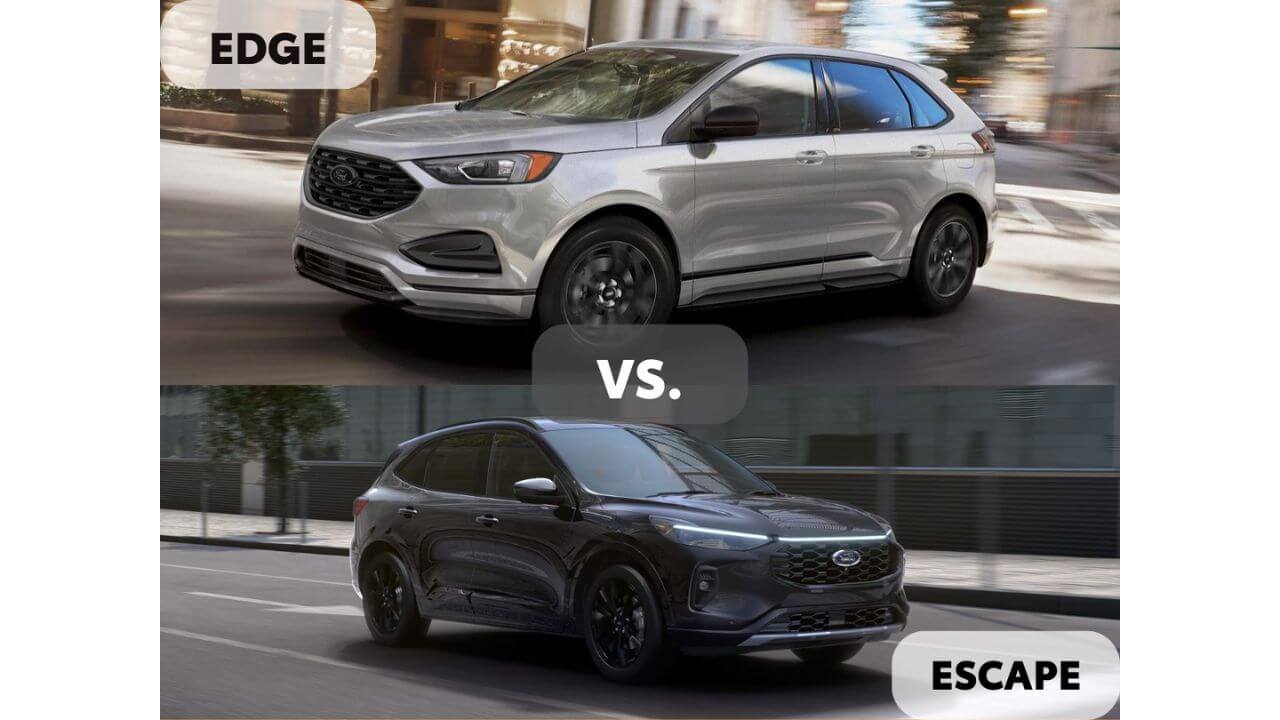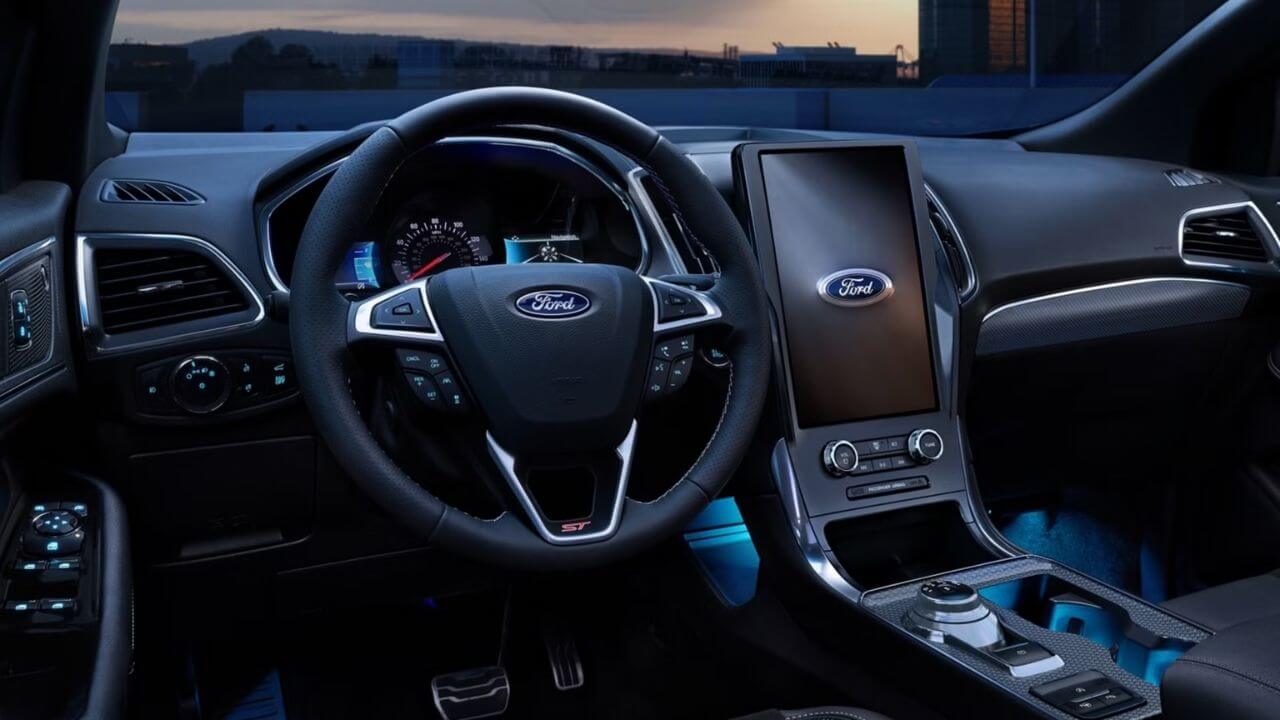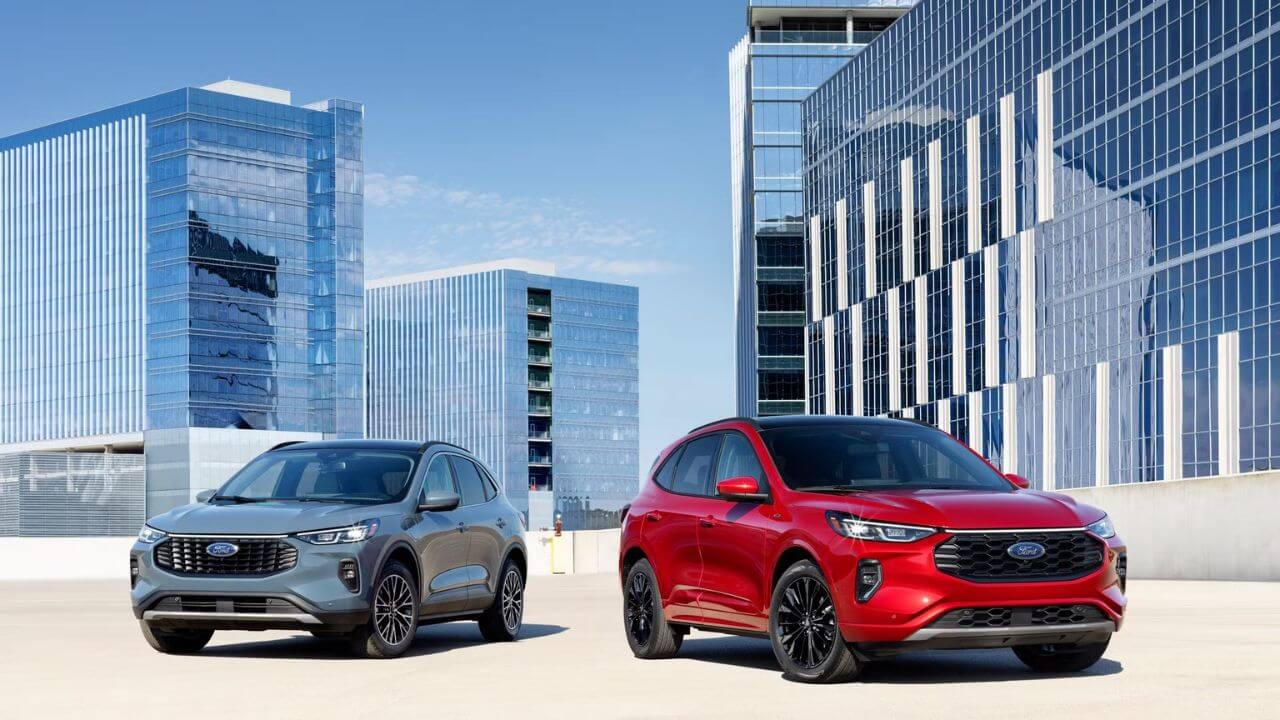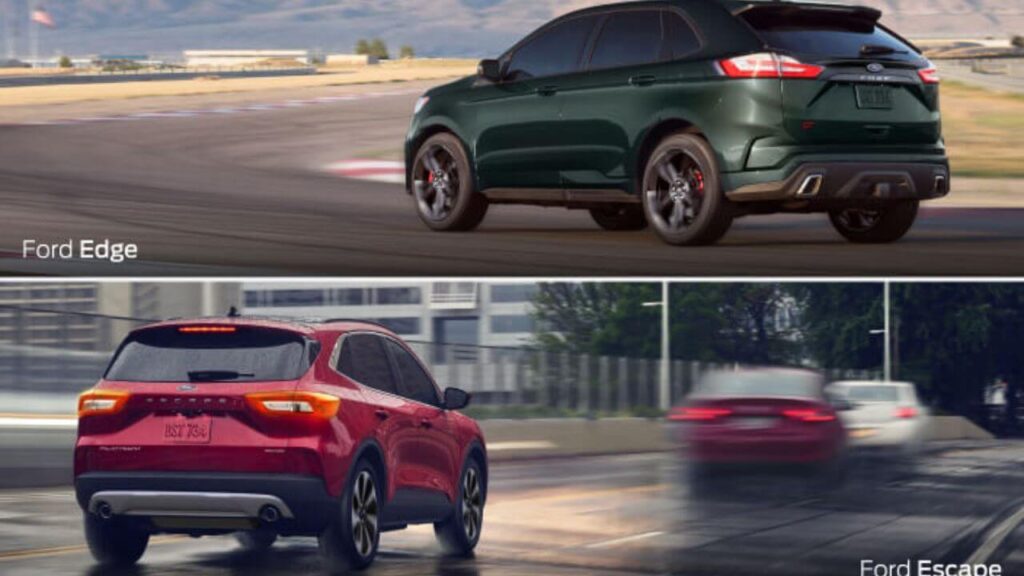Explore the comprehensive comparison of Ford Escape vs Ford Edge, focusing on engine specs, interior design, performance, and fuel efficiency. Discover which SUV suits your lifestyle with expert insights and detailed features for 2025 buyers.
When it comes to buying a new Ford SUV, the Ford Escape vs Ford Edge comparison usually becomes a focal point in a perspective of buyers who find themselves in the market for a versatile crossover or midsize SUV. Both models have their own advantages for different lifestyles, whether it’s the Efficiency and Hybrid options of the Escape or the superior Power and Spaciousness of the Edge. Exploring these vehicles in detail, including engine specifications, interior design, and technology, can help to have a better understanding to choose the right vehicle according to their requirements.
Understanding Some Important Differences Between Ford Escape vs Ford Edge
 Choosing between Ford Escape vs Ford Edge can be challenging as both these SUVs share Ford’s core values of quality, comfort, and innovation. However, the two vehicles are actually aimed at different audiences. The Escape is a compact SUV that appeals to people who need fuel economy and urban maneuverability, and the Edge references midsize SUV buyers who need more power and roominess. This blog will delve deeply into this Ford Escape vs Ford Edge debate with a detailed look at their performances capabilities, interior designs, and the latest technology features each has to offer. Using insights based on expert opinion with academic references, buyers can be confident in reaching an informed decision.
Choosing between Ford Escape vs Ford Edge can be challenging as both these SUVs share Ford’s core values of quality, comfort, and innovation. However, the two vehicles are actually aimed at different audiences. The Escape is a compact SUV that appeals to people who need fuel economy and urban maneuverability, and the Edge references midsize SUV buyers who need more power and roominess. This blog will delve deeply into this Ford Escape vs Ford Edge debate with a detailed look at their performances capabilities, interior designs, and the latest technology features each has to offer. Using insights based on expert opinion with academic references, buyers can be confident in reaching an informed decision.
Specs, and Performance, of an Engine
One of the biggest differences in the Ford Escape vs Ford Edge comparison has everything to do with their powertrains. The Edge is designed in the form of a midsize SUV that is targeted for higher engine offerings and innovative performance while the Escape balances power with hybrid technology for better fuel economy.
| Specification | Ford Escape | Ford Edge |
|---|---|---|
| Engine Options | 1.5L EcoBoost® 3-cylinder (181 hp, 190 lb-ft) | 2.0L EcoBoost® I-4 (250 hp, 280 lb-ft) |
| 2.0L EcoBoost® 4-cylinder (250 hp) | 2.7L EcoBoost® V6 Twin-Turbo (335 hp, 380 lb-ft) | |
| Hybrid Variants | Hybrid 2.5L 4-cylinder + electric motor (192 hp) | Not available |
| Plug-in Hybrid Variant | 2.5L 4-cylinder + electric motor (210 hp combined) | Not available |
| Transmission | 8-speed automatic | 8-speed automatic |
| Towing Capacity | Up to 3,500 lbs (with 2.0L engine and equipment) | Up to 3,500 lbs |
| Fuel Economy (mpg City/Hwy) | Gasoline: approx. 26/31 (varies by engine) | Gasoline: approx. 21/28 (varies by engine) |
Expert Perspective
Automotive analyst John Smith observes, “The Ford Edge is the go-to SUV for drivers that prioritize power and space, while the Escape continues to be an impressive choice in the compact segment with its versatile powertrain lineup and hybrid efficiency”.
Interior Design and Cabins Comfort
Beyond performance, the interior design and comfort make a big difference in Ford Escape vs Ford Edge experience. Both SUVs seat five passengers comfortably, but both SUV cabins display their class difference in atmosphere and utilization of space.
Ford Edge Interior

The Edge’s internal design is more toward a high-end and refined look. It contains a standard 12-inch tablet-style SYNC(R) 4A touchscreen in the center of the dashboard, which harmonizes with the cabin’s layout. Optional features such as cooled front seats, heated rear seats, and premium leather upholstery help to enhance the luxury experience. The Edge also features a panoramic Vista Roof(R) adding to the airy cabin feel.
Ford Escape Interior

Technology highlights include an 8-inch standard touchscreen that offers a larger 13.2-inch screen option on higher trims. The Escape interior supports dual-zone climate control, heated steering wheels and the panoramic Vista Roof(R). Although the Escape’s cabin configuration works well, some reviews report that the placement of buttons and controls are not as integrated as the Edge, which is cleaner and more cohesive.
Additional Comparisons: Size, Practicality and Value

For those who value maneuverability, particularly in an urban setting, the Escape’s smaller dimensions make it easier to park and drive in the city.
Regarding pricing, the Escape begins at a more affordable price point (around $28,150 for the 2025 model) in stark contrast to the Edge, which begins around $38,000, reflecting the larger size and added features of the two vehicles.
Results: Ford Escape vs Ford Edge: Which Is Right For You
In the end, Ford Escape vs Ford Edge is a battle between personal needs and priorities. The Edge is a great midsize SUV with roomy interiors, lavish features and solid performance, particularly with the optional V6 engine. It’s well-suited to families or drivers that care about comfort and power above all else.
On the other hand, the Escape is designed for buyers that want versatility, fuel efficiency, and advanced hybrid technology in a small SUV that eases city life with ease.
Both vehicles are true to Ford’s reputation for quality and advanced features, but their differences appeal to lifestyles. Prospective buyers should consider their driving habits, space needs, and budget to make the best choice. Ultimately, whether it’s the efficiency and modern hybrid options of the Escape or the spacious power and refinement of the Edge, Ford has some solid options that place highly in a highly competitive SUV market for 2025.

